Due to the fact that the quality of the received signal is adversely affected by the beam squint phenomenon, which is especially pertinent to the millimeter wave (mmwave) bands, many studies have been utilised by other researchers to provide light on some of the challenges that come with analysing this type of occurrence. Squint causes several issues, the most important of which are its detrimental effects on gain, line of sight, angle of arrival, progressive phase, usable bandwidth, and fading effect. As a result of these obstacles, the advantages of adopting a high-frequency band such as mmwave in modern wireless communication systems are severely limited.
- beam squinting
- massive MIMO
- millimeter waves
1. Introduction
2. Broadband Communication
2.1. Millimeter Waves and Massive MIMO

2.1.1. Analog Beamforming

2.1.2. Digital Beamforming
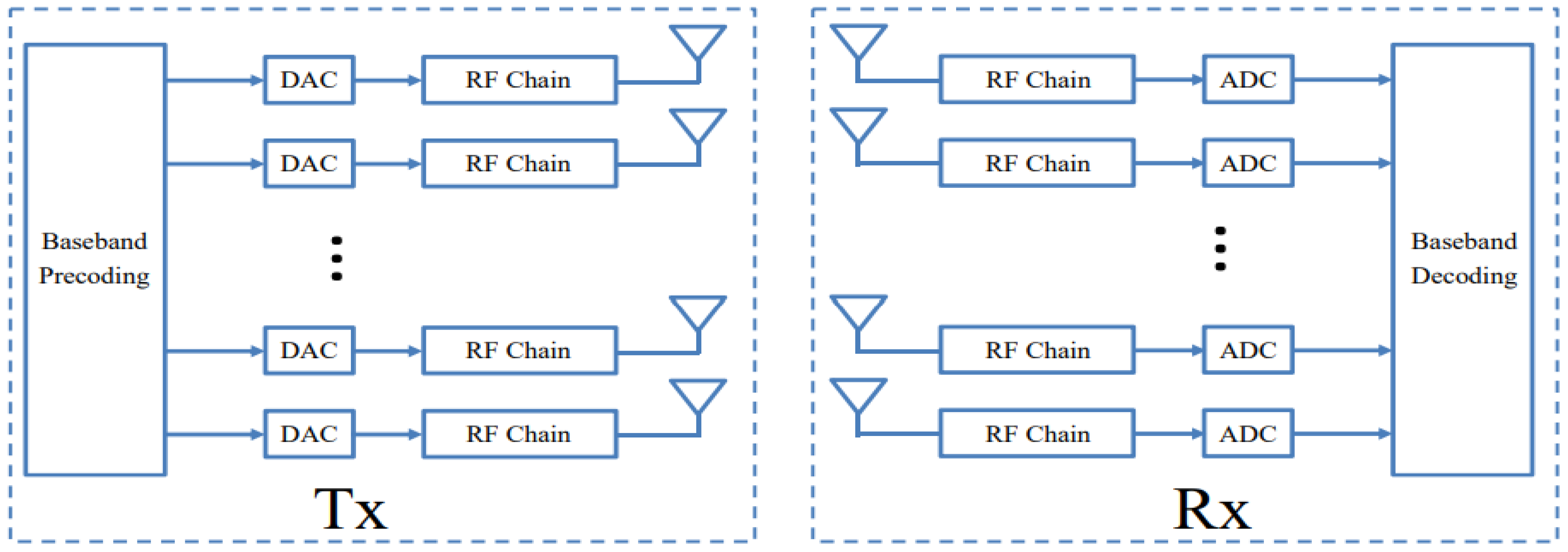
2.1.3. Hybrid Beamforming

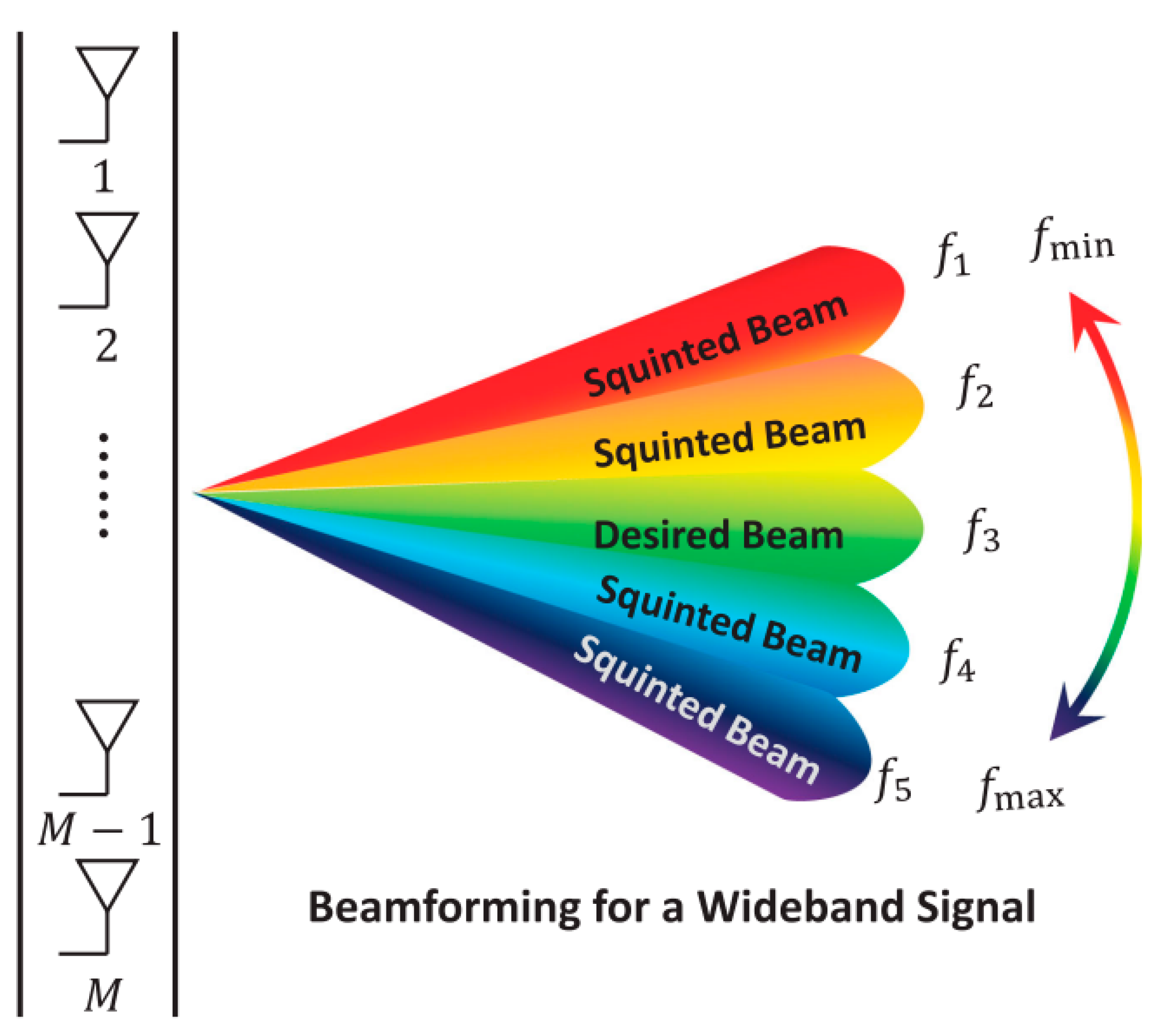
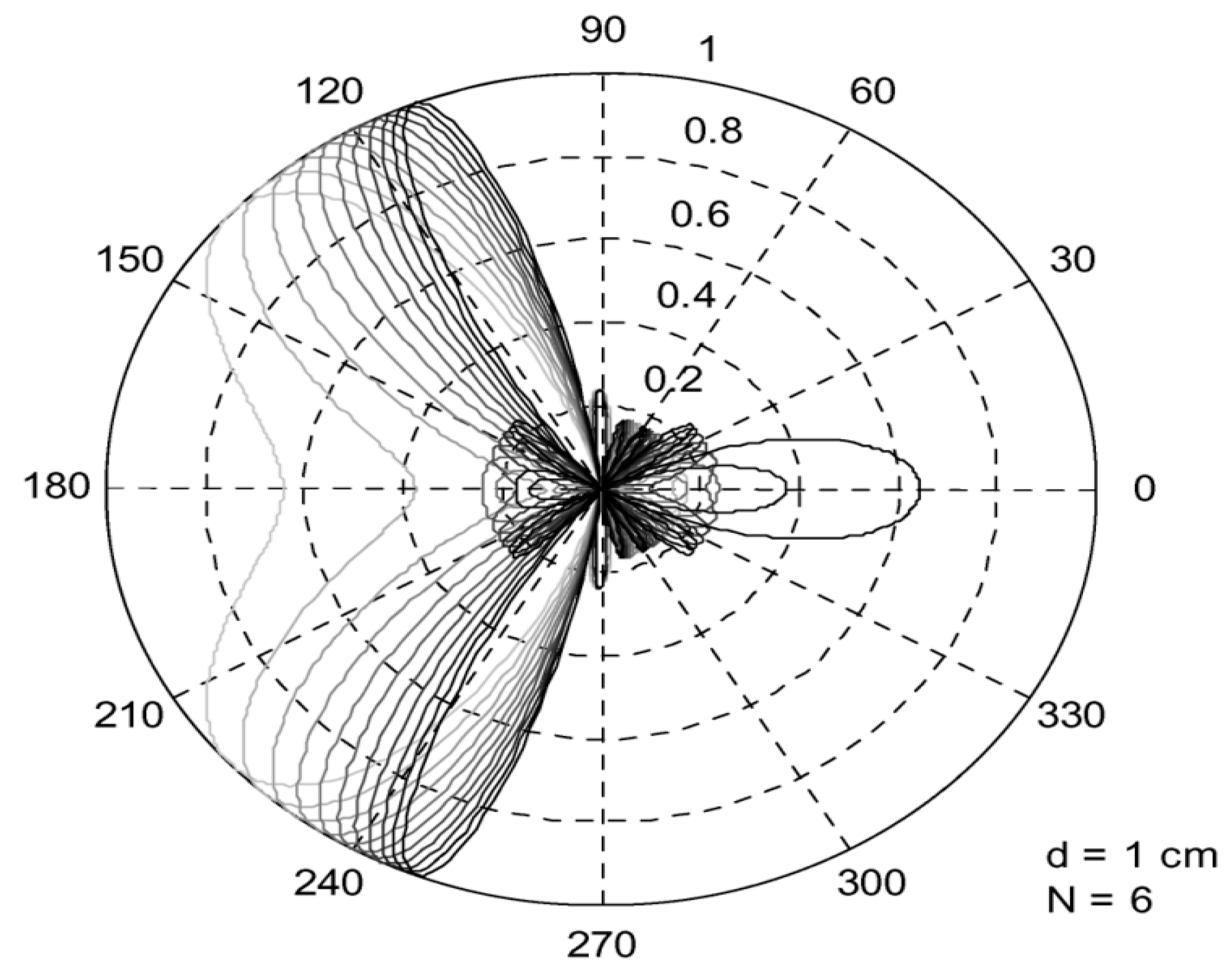
2.2. Effect of Beam Squint on the Communication System Performance
-
Bandwidth and Capacity:
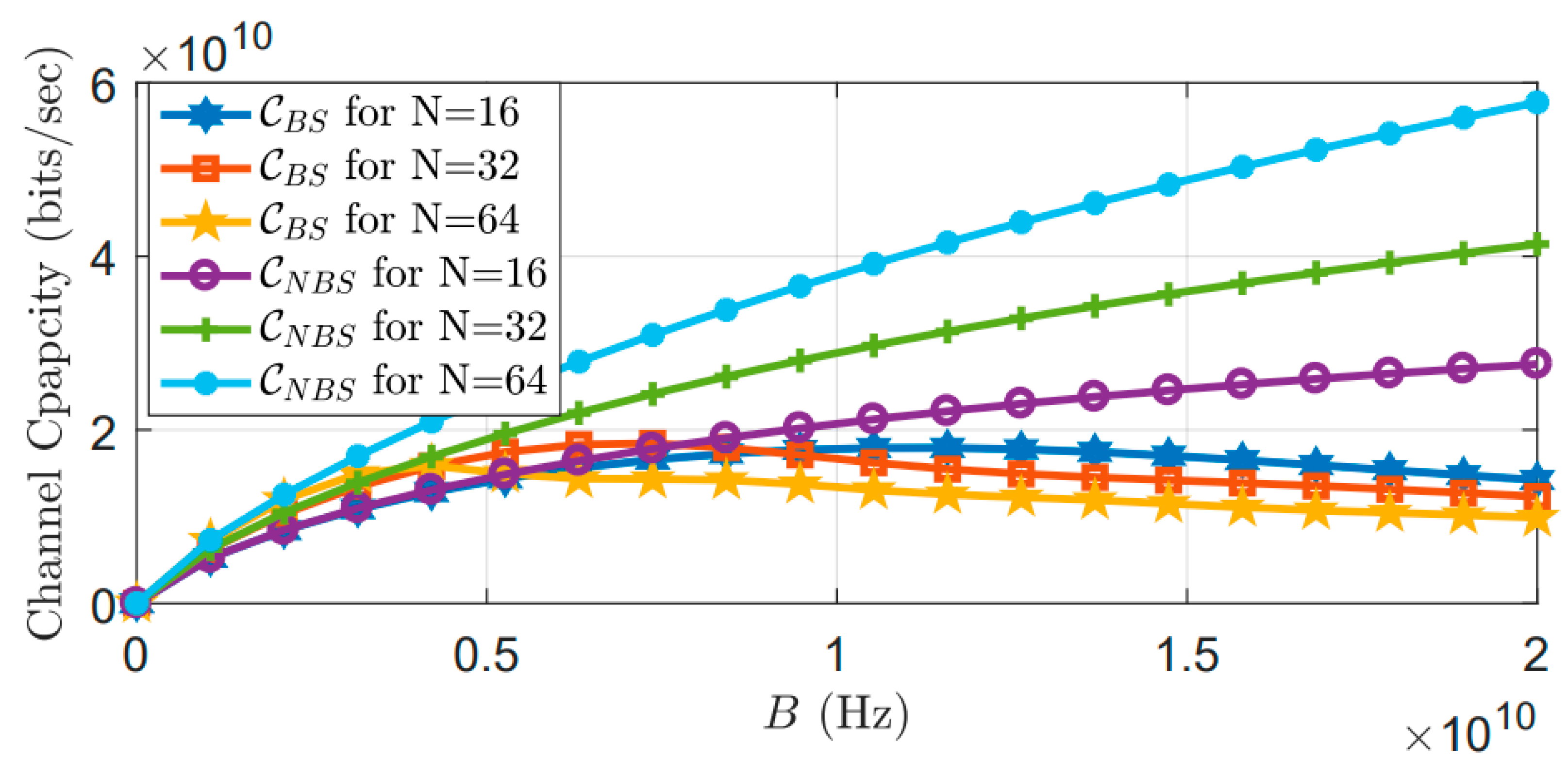
-
Channel estimation:
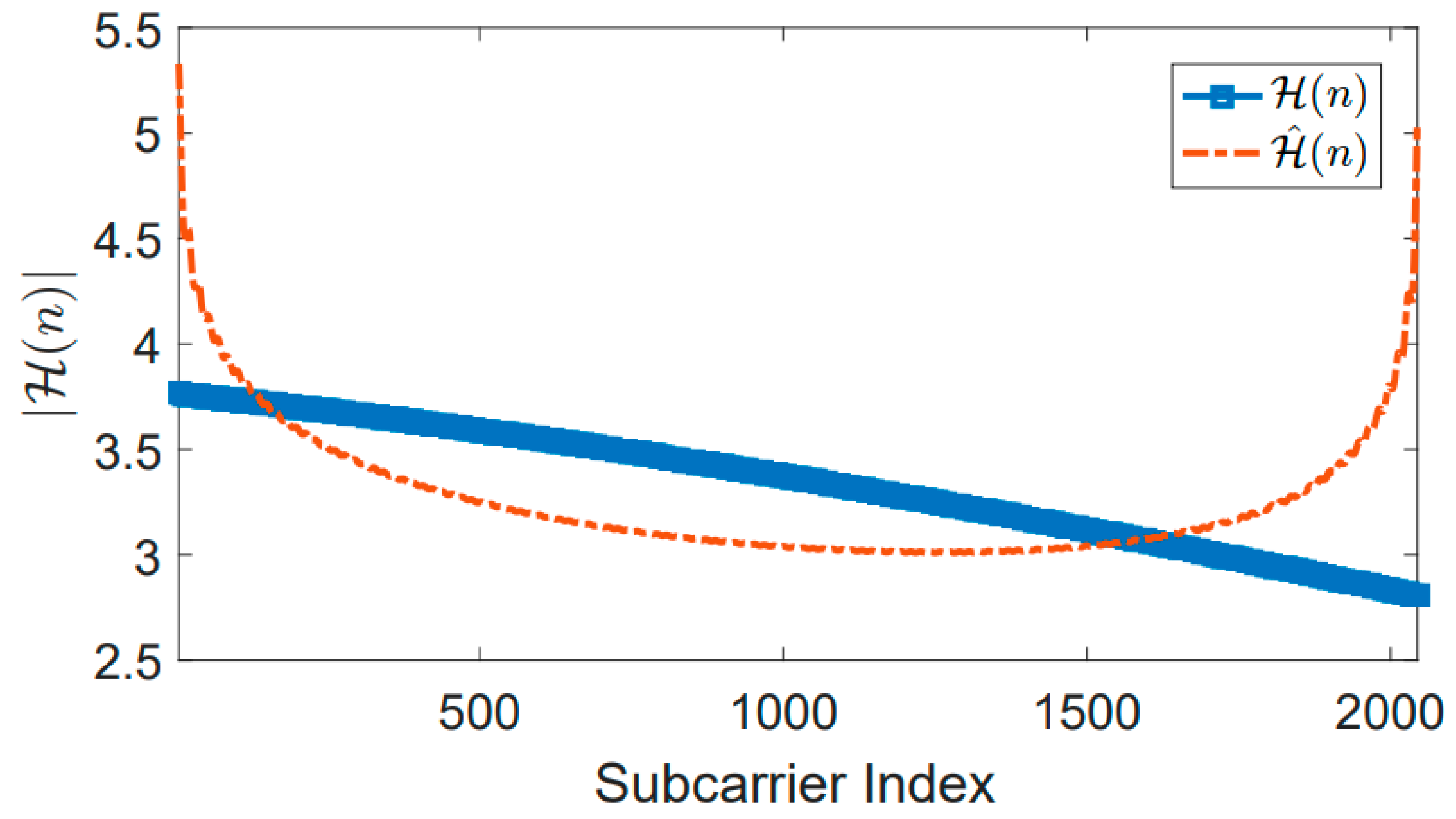
This entry is adapted from the peer-reviewed paper 10.3390/electronics12020400
References
- Cihat, S.; Muhammet, T.; Turgut, O. A Review of Millimeter Wave Communication for 5G. In Proceedings of the 2018 2nd International Symposium on Multidisciplinary Studies and Innovative Technologies (ISMSIT), Ankara, Turkey, 19–21 October 2018; IEEE: New York, NY, USA, 2018.
- Ullah, H.; Nair, N.G.; Moore, A.; Nugent, C.; Muschamp, P.; Cuevas, M. 5G Communication: An Overview of Vehicle-to-Everything, Drones, and Healthcare Use-Cases. IEEE Access 2019, 7, 37251–37268.
- Duong, T.; Elkashlan, M. Millimeter-wave communications for 5G: Fundamentals. IEEE Commun. Mag. 2014, 52, 52–54.
- Wei, L.; Hu, R.Q.; Qian, Y.; Wu, G. Key elements to enable millimeter wave communications for 5G wireless systems. IEEE Wirel. Commun. 2014, 21, 136–143.
- van Berlo, B.; Elkelany, A.; Ozcelebi, T.; Meratnia, N. Millimeter Wave Sensing: A Review of Application Pipelines and Building Blocks. IEEE Sensors J. 2021, 21, 10332–10368.
- Mohanty, S.; Agarwal, A.; Agarwal, K.; Mali, S.; Misran, G. Role of Millimeter Wave for Future 5G Mobile Networks: Its Po-tential, Prospects and Challenges. In Proceedings of the 2021 1st Odisha International Conference on Electrical Power Engineering, Communication and Computing Technology (ODICON), Bhubaneswar, India, 8–9 January 2021; pp. 1–4.
- Rappaport, T.S.; Sun, S.; Mayzus, R.; Zhao, H.; Azar, Y.; Wang, K.; Wong, G.N.; Schulz, J.K.; Samimi, M.; Gutierrez, F. Millimeter wave mobile communications for 5g cellular: It will work. Access IEEE 2013, 1, 335–349.
- Bogale, T.; Wang, X.; Le, L. Chapter 9–mm-Wave communication enabling techniques for 5G wireless systems: A link level perspective. Mmwave Massive MIMO 2017, 195–225.
- Wang, M.; Gao, F.; Jin, S.; Lin. An Overview of Enhanced Massive MIMO With Array Signal Processing Techniques. IEEE J. Sel. Top. Signal Process. 2019, 13, 886–901.
- Akyildiz, I.F.; Han, C.; Nie, S. Combating the Distance Problem in the Millimeter Wave and Terahertz Frequency Bands. IEEE Commun. Mag. 2018, 56, 102–108.
- Busari, S.A.; Huq, K.M.S.; Mumtaz, S.; Dai, L.; Rodriguez, J. Millimeter-Wave Massive MIMO Communication for Future Wireless Systems: A Survey. IEEE Commun. Surv. Tutorials 2017, 20, 836–869.
- Sarieddeen, H.; Saeed, N.; Al-Naffouri, T.Y.; Alouini, M.-S. Next Generation Terahertz Communications: A Rendezvous of Sensing, Imaging, and Localization. IEEE Commun. Mag. 2020, 58, 69–75.
- Al-Sadoon, M.; Patwary, M.; Parchin, N.; Aldelemy, A.; Abd-Alhameed, R. New Beamforming Ap-proach Using 60 GHz Antenna Arrays for Multi-Beams 5G Applications. Electronics 2022, 11, 1739.
- Xiao, M.; Mumtaz, S.; Huang, Y.; Dai, L.; Li, Y.; Matthaiou, M.; Karagiannidis, G.K.; Bjornson, E.; Yang, K.; Chih-Lin, I.; et al. Millimeter Wave Communications for Future Mobile Networks. IEEE J. Sel. Areas Commun. 2017, 35, 1909–1935.
- Du, J.; Valenzuela, R.A. How Much Spectrum is too Much in Millimeter Wave Wireless Access. IEEE J. Sel. Areas Commun. 2017, 35, 1444–1458.
- Andrews, J.G.; Buzzi, S.; Choi, W.; Hanly, S.V.; Lozano, A.; Soong, A.C.K.; Zhang, J.C. What will 5G be? IEEE J. Sel. Areas Commun. 2014, 32, 1065–1082.
- Andrews, J.G.; Bai, T.; Kulkarni, M.N.; Alkhateeb, A.; Gupta, A.K.; Heath, R.W. Modeling and Analyzing Millimeter Wave Cellular Systems. IEEE Trans. Commun. 2016, 65, 403–430.
- Swindlehurst, A.L.; Ayanoglu, E.; Heydari, P.; Capolino, F. Millimeter-wave massive MIMO: The next wireless revolution? IEEE Commun. Mag. 2014, 52, 56–62.
- Feng, W.; Li, Y.; Jin, D.; Su, L.; Chen, S. Millimeter-wave backhaul for 5G networks: Challenges and solutions. Sensors 2016, 16, 892.
- Li, J.; Niu, Y.; Wu, H.; Ai, B.; Chen, S.; Feng, Z.; Zhong, Z.; Wang, N. Mobility Support for Millimeter Wave Communications: Opportunities and Challenges. IEEE Commun. Surv. Tutorials 2022, 24, 1816–1842.
- Zugno, T.; Drago, M.; Giordani, M.; Polese, M.; Zorzi, M. Toward standardization of millimeter-wave vehicle-tovehicle networks: Open challenges and performance evaluation. IEEE Communi. Mag. 2020, 58, 79–85.
- Kutty, S.; Sen, D. Beamforming for Millimeter Wave Communications: An Inclusive Survey. IEEE Commun. Surv. Tutorials 2015, 18, 949–973.
- Bjornson, E.; Van der Perre, L.; Buzzi, S.; Larsson, E.G. Massive MIMO in sub-6 GHz and mm-Wave: Physical, practical, and use-case differences. IEEE Wirel. Commun. 2019, 26, 100–108.
- Mandloi, M.S.; Gupta, P.; Parmar, A.; Malviya, P.; Malviya, L. Beamforming MIMO Array Antenna for 5G-Millimeter-Wave Application. Wirel. Pers. Commun. 2022, 1–20.
- Herd, J.S.; Conway, M.D. The Evolution to Modern Phased Array Architectures. Proc. IEEE 2015, 104, 519–529.
- Araújo, D.C.; Maksymyuk, T.; de Almeida, A.L.; Maciel, T.; Mota, J.C.; Jo, M. Massive MIMO: Survey and future research topics. IET Commun. 2016, 10, 1938–1946.
- Bogale, T.E.; Le, L.B.; Haghighat, A.; Vandendorpe, L. On the Number of RF Chains and Phase Shifters, and Scheduling Design with Hybrid Analog–Digital Beamforming. IEEE Trans. Wirel. Commun. 2010, 15, 3311–3326.
- Venkateswaran, M.V.; van der Veen, A. Analog Beamforming in MIMO Communications with Phase Shift Networks and Online Channel Estimation. IEEE Trans. Signal Process. 2010, 58, 4131–4143.
- Steyskal, H. Digital beamforming. In Proceedings of the 1988 18th European Microwave Conference, Stockholm, Sweden, 12–15 September 1988.
- Heath, R.W.; González-Prelcic, N.; Rangan, S.; Roh, W.; Sayeed, A.M. An Overview of Signal Processing Techniques for Millimeter Wave MIMO Systems. IEEE J. Sel. Top. Signal Process. 2016, 10, 436–453.
- Dan; Dudgeon, E.; Johnson, D.H. Array Signal Processing: Concepts and Techniques; P T R Prentice Hall: Hoboken, NJ, USA, 1993.
- Sohrabi, F.; Yu, W. Hybrid Analog and Digital Beamforming for mmWave OFDM Large-Scale Antenna Arrays. IEEE J. Sel. Areas Commun. 2017, 35, 1432–1443.
- Zhu, G.; Huang, K.; Lau, V.K.N.; Xia, B.; Li, X.; Zhang, S. Hybrid Beamforming via the Kronecker Decomposition for the Millimeter-Wave Massive MIMO Systems. IEEE J. Sel. Areas Commun. 2017, 35, 2097–2114.
- Gherekhloo, S.; Ardah, K.; Haardt, M. Hybrid Beamforming Design for Downlink MU-MIMO-OFDM Millimeter-Wave Systems. In Proceedings of the 2020 IEEE 11th Sensor Array and Multichannel Signal Processing Workshop (SAM), Hangzhou, China, 8–11 June 2020; pp. 1–5.
- Khan, F.; Pi, Z.; Rajagopal, S. Millimeter-wave mobile broadband with large scale spatial processing for 5G mobile com-munication. In Proceedings of the 2012 50th Annual Allerton Conference on Communication, Control, and Computing (Allerton), Monticello, IL, USA, 1–5 October 2012; pp. 1517–1523.
- Zhang, J.; Yu, X.; Letaief, K.B. Hybrid Beamforming for 5G and Beyond Millimeter-Wave Systems: A Holistic View. IEEE Open J. Commun. Soc. 2019, 1, 77–91.
- Cai, M.; Laneman, J.N.; Hochwald, B. Beamforming codebook compensation for beam squint with channel capacity con-straint. In Proceedings of the 2017 IEEE International Symposium on Information Theory (ISIT), Aachen, Germany, 25–30 June 2017; pp. 76–80.
- Pan, X.; Li, C.; Yang, L. Wideband beamspace squint user grouping algorithm based on subarray collaboration. EURASIP J. Adv. Signal Process. 2022, 2022, 1–14.
- Available online: https://www.analog.com/en/analog-dialogue/articles/phased-array-antenna-patterns-part2.html (accessed on 1 June 2020).
- Yao, J. Microwave Photonics. J. Light. Technol. 2009, 27, 314–335.
- Bonjour, R.; Singleton, M.; Leuchtmann, P.; Leuthold, J. Comparison of steering angle and bandwidth for various phased array antenna concepts. Opt. Commun. 2016, 373, 35–43.
- Cai, M. Modeling and Mitigating Beam Squint in Millimeter Wave Wireless Communication. Ph.D. Thesis, Graduate Program in Electrical Engineering, Notre Dame, Indiana, March 2012.
